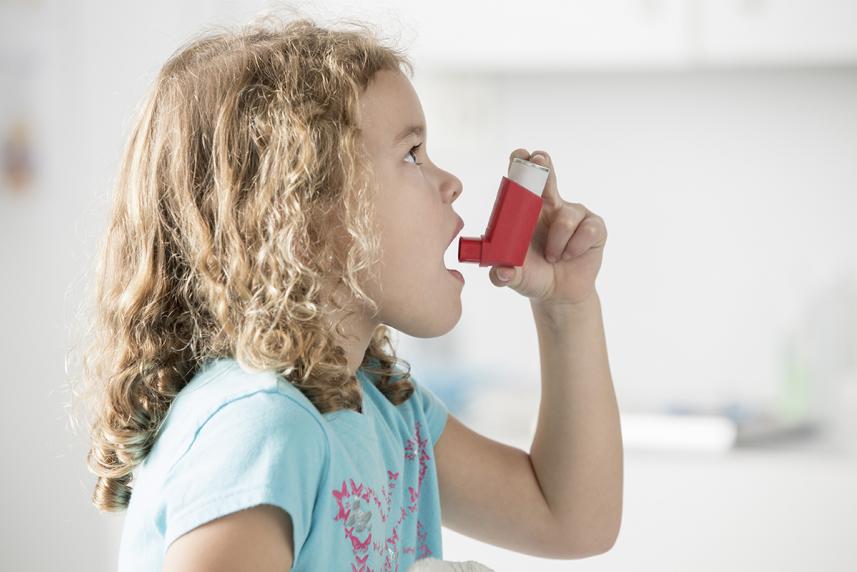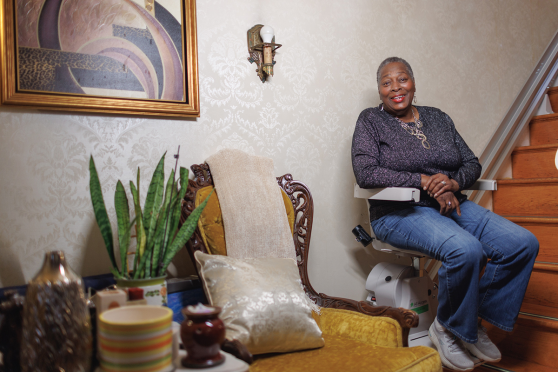A parent’s guide for kids with asthma
How to help your child (and yourself) enjoy a full and active life

Learning your child has asthma can be scary and overwhelming. When you first get the news, you’re not sure of what to expect or what parts of life might change. But an asthma diagnosis doesn’t have to upend your routines. Use the expert tips here, and work with your child’s health care team, to help you and your child learn more about asthma and ways to control your child’s symptoms.
What is asthma?
It’s a chronic condition that impacts the lungs and airways. When you have asthma, your airways can sometimes become inflamed and narrowed, and this can make it harder to breathe. Symptoms can include, but are not limited to, coughing, wheezing, shortness of breath, and chest tightness. Certain things can irritate the lungs and trigger asthma symptoms. Everyone has different triggers, but some of the more common ones include secondhand smoke, pets, allergies to pollen and foods, products with strong smells, dust mites (tiny pests that cause allergies), and having a cold.
While people may develop asthma at any age, most kids develop it by around age 2. It affects an estimated 6.1 million children, according to the American Lung Association. “Children have smaller airways than adults, and it can make asthma or asthma attacks more serious for them,” says Marina Reznik, M.D., a pediatric asthma specialist at the Children’s Hospital at Montefiore Medical Center in New York.
How is it treated?
While asthma can be serious for little ones, know that it can be effectively managed with daily controller medications and rescue inhalers for symptom flare-ups. Doctors treat young children with lower doses of the same asthma medications that older children and adults use. Some younger children use an inhaler with a mask to make it easier to take the medication.
Stick to the asthma action plan.
When your child was diagnosed, their doctor should have given you a set of instructions explaining when to take medicines, how to handle asthma attacks, and what symptoms warrant a call to the doctor or to 911. That’s your child’s Asthma Action Plan, and it’s important to know it inside and out, says David Jeong, M.D., an asthma specialist at Virginia Mason Medical Center in Seattle.
Having an asthma action plan and showing your child how to take their asthma medication correctly can significantly increase your chances of keeping your child out of the emergency room or hospital for asthma-related issues. Try these tips below:
Learn your child’s triggers.
Ask your child’s teachers and caregivers if they’ve noticed any connections between your child’s surroundings and their symptoms. Also be mindful of any symptoms your child has while at home or on outings with you, and anything that may bring on symptoms anywhere your child goes. Once you understand what sets off their symptoms, you can take steps to avoid the trigger or take preventive measures.
Learn about the medications.
Make sure both you and your child understand why they need their medications, when to take it, and what the side effects might be. (Yes, even young children can take an active role in controlling their asthma.) Teach them how to use an inhaler the right way, including making sure they use a spacer with their inhaler to ensure they’re getting all of their medication when they inhale. If a child doesn’t inhale properly, any medication not inhaled would remain in the spacer until the child inhales it again. Without the spacer, the child would not have inhaled all of their medication. Make sure they know when to find an adult to ask for help.
Share information with others.
Work with your child’s doctor and asthma specialist/pulmonologist to make an away-from-home plan. If they’re in school, send a note explaining their medication needs and allergies, your contact information, and other important information like known triggers. And make sure family and other caregivers are aware of your action plan, too.
Get your child ready for questions.
Even with the perfect away-from-home plan, those around your child — their teachers, coaches, friends, sitters — may still ask them questions. Help your child plan for any questions they may be asked at school.
Keep them active.
Exercise is a possible asthma trigger, but you shouldn’t keep your child on the sidelines, says Albert A. Rizzo, M.D., a senior medical advisor to the American Lung Association and chief of pulmonary care at Christiana Care Health System in Delaware. The health benefits of being physically active are too important. Instead, says Dr. Rizzo, ask your child’s doctor to show you and your child how to approach playtime safely.
Know the warning signs.
You don’t live in a bubble — and neither do your children. Since it’s impossible to avoid every trigger, it’s important to spot the signs of a flare-up. Early signs include:
- Trouble catching their breath
- Tightness or a squeezing sensation in the chest
- Coughing
- Wheezing
Treating symptoms as early as possible can help prevent them from worsening and causing a severe asthma attack. Always carry your child’s medicines, spacer, pump, and mask attachment.
Remember, your child has an urgent care benefit. Urgent care centers and retail health clinics are an easy, safe, and less costly option than the emergency room. Talk to your child’s primary care physician about when it is appropriate to go to the doctor’s office, an urgent care center, or an emergency room facility.
You’ve got this! For more information about managing your child’s asthma, visit the American Lung Association’s website.



